For “Mammal Monday”:
10 Very Strange Animal Group Names
“According to Mother Nature Network, “Whether it's a shrewdness of apes, a pandemonium of parrots or a zeal of zebras, lots of animals have bizarre, little-known names when they cluster into crowds.””
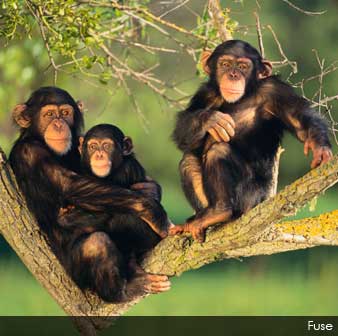
A group of apes...
- ...is called a shrewdness.

A group of bats...
...is called a cauldron.

A group of ferrets...
...is called a business.

A group of giraffes...
...is called a tower.
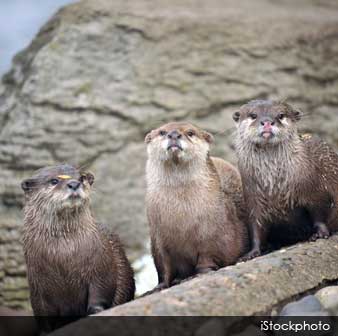
A group of otters...
...is called a romp.
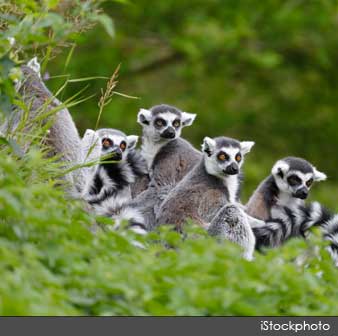
A group of lemurs...
...is called a conspiracy.
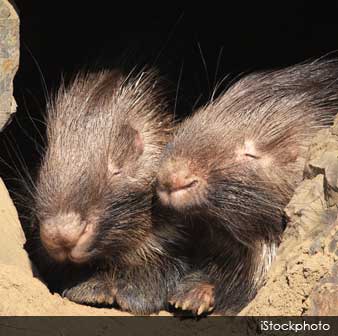
A group of porcupines...
- ...is called a prickle.

A group of jaguars...
...is called a shadow.
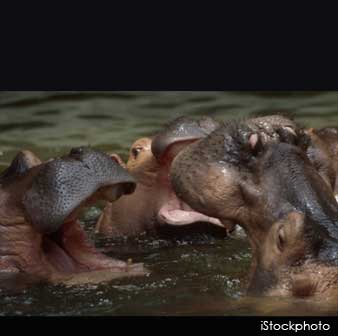
A group of hippos...
...is called a bloat.

A group of squirrels...
...is called a scurry.
_______
Coconut Oil in Your Pet's Diet
“Dr. Karen Becker discusses the importance of coconut oil in your pet's diet. Coconut oil is good for balancing good to bad bacteria issue. Coconut oil is also terrific moisturizer for animals with skin allergies, dry and flaky skins, cuts, sores, pets with thin coats, dry cut noses and other pet's skin problems.:
_______
Olinguito, New Mammal Species, Announced By Smithsonian Researchers

An olinguito. (AP Photo/Mark Gurney)
WASHINGTON — “Imagine a mini-raccoon with a teddy bear face that is so cute it's hard to resist, let alone overlook. But somehow science did – until now.
Researchers announced Thursday a rare discovery of a new species of mammal called the olinguito. The reddish-brown animal is about 14-inches long with an equally long tail and weighs about 2 pounds.
It belongs to a grouping of large creatures that include dogs, cats and bears.
The critter leaps through the trees of mountainous forests of Ecuador and Colombia at night, according to a Smithsonian researcher who has spent the past decade tracking them.
But the adorable olinguito (oh-lihn-GEE'-toe) shouldn't have been so hard to find. One of them once lived in the Smithsonian-run National Zoo in Washington for a year in a case of mistaken identity.
Northern olingo in Costa Rica
It's hard to figure how olingos and onlinguitos were confused for each other. "How is it different? In almost every way that you can look at it," Helgen said. Olinguitos are smaller, have shorter tails, a rounder face, tinier ears and darker bushier fur, he said.” More at: http://www.huffingtonpost.com/2013/08/15/olinguito-new-mammal-species_n_3761649.html
_______
Rehabbed Orphan Bobcat Returns to the Wild


 In April, at 8 months of age, a healthy, growling, snarling Chips was released with one of her den mates back into “bobcat territory” in the Lassen-Plumas region.” More at: http://healthypets.mercola.com/sites/healthypets/archive/2013/08/21/chips-bobcat-rehabilitation.aspx
In April, at 8 months of age, a healthy, growling, snarling Chips was released with one of her den mates back into “bobcat territory” in the Lassen-Plumas region.” More at: http://healthypets.mercola.com/sites/healthypets/archive/2013/08/21/chips-bobcat-rehabilitation.aspx
_______
Pet Cats Exhibit Many Behaviors of Felines in the Wild
![images[3] images[3]](https://blogger.googleusercontent.com/img/b/R29vZ2xl/AVvXsEi02CBZCQAuuurexh3f3zseJlwgS7YPj10f-j_0BzNZ3FalvYZhN-MYSzVPntJdm-gEQi8wJnh_2RhUB430wca4LTbDTc0hSmVWeAESqEqxqXtAp6j1R3rae06iEv2eIu-Phnq19fJWBagx/?imgmax=800)
Scent marking is a common behavior in pet cats that seems to have derived from lions in the wild. Its purpose is to establish a “family scent” among members of the pride.
Both domestic and wild cats like to rest on high perches, away from dangers (real or perceived) on the ground.
Pet cats maintain certain behaviors throughout adulthood that are not seen in wild cats after adolescence.” More at: http://healthypets.mercola.com/sites/healthypets/archive/2013/07/29/pet-cat-behavior.aspx
_______
Avoid a Cat-astrophe
Keep cats indoors to protect pets and wildlife

Cats love the thrill of the hunt. It’s a part of a cat just being a cat. Meredith Lee/for The HSUS
“Anyone who has spent any time around cats knows they stalk, chase, and pounce on prey. Younger cats especially enjoy the thrill of the hunt—even if the “prey” is a wad of paper thrown across the floor. This is a normal behavior—part of a cat just being a cat.
If they are allowed outdoors, some cats will also chase wildlife. Even a pet cat with a full belly may not be able to resist the instinct to hunt and catch prey. Birds, small mammals, reptiles, and amphibians are among their prey. It’s something that veterinarians and wildlife rehabilitators see all too often.
Bird sings the blues
Birds and other wildlife are brought to the Cape Wildlife Center in Barnstable, Mass., for all kinds of reasons. Some have accidentally flown into windows or become entangled in fishing line. Some are sick. And some, like this beautiful bluebird who arrived one cold day last winter, have been hurt by a cat.
After medical care and rest, this bluebird was ready to be released back to the wild. Heather Fone/The HSUS
Luckily, the cat’s owners rescued the bluebird. They knew that the Cape Wildlife Center, operated by The Humane Society of the United States in partnership with The Fund for Animals, cares for injured wild animals. They brought the bird to the center in hopes she could be saved.
“Her injuries required nearly two months to mend,” says Deborah Millman, center director. But after medical care and time to exercise and re-grow her feathers, she was ready to be released back into the wild. On a beautiful spring day, the family who had rescued the bird returned to the center for her. “[They] brought her to a safe place near where they found her and let her go,” says Millman.
This family learned the hard way that allowing cats to roam outdoors can be dangerous for wildlife. It can also be dangerous for the cats themselves, as they can become victims of traffic, bad weather, other animals, diseases, or poisons. Keeping cats indoors where they’re safe—and wildlife is safe from them—is best for everyone.” From: http://www.humanesociety.org/news/magazines/kind_news/2013/08-09/avoid-cat-astrophe-keep-cats-indoors.html
_______
_______
Don't Let Ag-gag Bills Hide Animal Cruelty
You might remember, for example, our investigation into shocking abuse of downed cows at a slaughter plant in California, which led to cruelty convictions, new federal reforms, the largest meat recall in U.S. history, and the shut-down of the number-two supplier of ground beef to the National School Lunch Program.
But instead of correcting their illegal and unethical activities, agribusiness has been pushing anti-whistleblower bills -- "ag-gag" bills -- to prevent you from finding out about them.
The question I keep coming back to is this: If there's really nothing to hide, then why the need for such unrelenting secrecy?”
TAKE ACTION
Join The HSUS and animal lovers nationwide to protect animals from dangerous "ag-gag" bills by signing our pledge below:
They can't put tape over my mouth!https://secure.humanesociety.org/site/Advocacy?cmd=display&page=UserAction&id=6047&autologin=true&s_src=em_MMFAP082113rightR
_______
On This Day:
Lights, cameras, baseball, Aug 26, 1939:
“On this day in 1939, television station W2XBS in New York City broadcasts a doubleheader between the Brooklyn Dodgers and the Cincinnati Reds from Ebbets Field in Brooklyn. The game, filmed with two cameras, was the first Major League Baseball game ever aired on television.
W2XBS in Manhattan, a trailblazing television station owned by NBC, was the first to broadcast not just baseball, but college and professional football in 1939 and hockey and basketball in 1940. The station’s first foray into baseball broadcasting came in May 1939 when it aired a game between Columbia and Princeton universities from Baker Field in upper Manhattan–using just one camera that was essentially unable to follow the game as well as the naked eye.
Three months later for the major league game, a second camera was added in order to better follow the action on the field. The first was placed by the visitor’s dugout down the third base line; the second camera was in the stands directly behind home plate. Newspapers reported that the ball could be seen leaving the pitcher’s hand on the way to home plate some of the time, a dramatic improvement over the first broadcast at Columbia.
Red Barber, the long-time radio voice of the Dodgers, also called the game for the broadcast. In the first game, Reds ace pitcher Bucky Walters flummoxed the Dodgers, holding them to just two hits in a 5-2 win. The Dodgers got their revenge in the second game with a 6-1 victory. In that second game, Dodger pitcher Hugh Casey snagged his ninth win with help from first baseman Dolf Camilli, who hit a two-run game-winning home run, his 22nd of the year, in the second inning.
The game was broadcast from New York City’s Empire State Building, completed just eight years earlier, and could be seen in homes up to 50 miles away.
Today, televised sports is a multi-billion dollar industry, with technology that gives viewers an astounding amount of visual and audio detail. Cameras are now so precise that they can capture the way a ball changes shape when struck by a bat, and athletes are wired to pick up field-level and sideline conversation.”
_______
Yesterday:
Misty and I went to get Jay, and while we were walking she found a scent that she really wanted to investigate, and I had a hard time getting her to walk away from it. Raccoon, possum, armadillo, I wonder what it was? Poodles are hunting dogs originally, anyway, but she acts like a bloodhound.
When Jay and I were looking at my screen porch roof, we realized that the contractors had put the front 1x4 stripping too far back, so we wouldn’t be able to make the screen porch bug-proof. We took off the roofing that we had just put on, and put some 1x4’s above the top plate. Then we put in the foam closure strips before screwing the roofing down again. Now there is something to staple the screen on to, and make it bug free.
That took us all morning, but it was good weather, and a very nice day.


















No comments:
Post a Comment